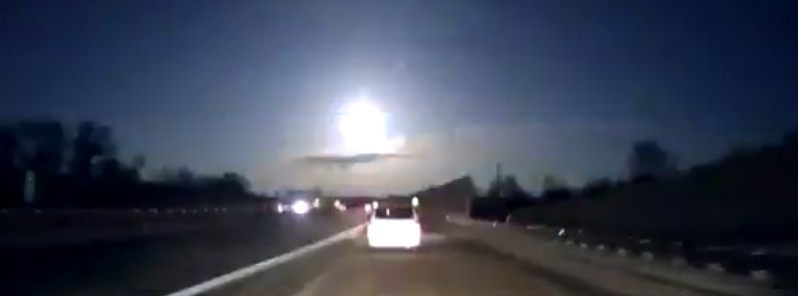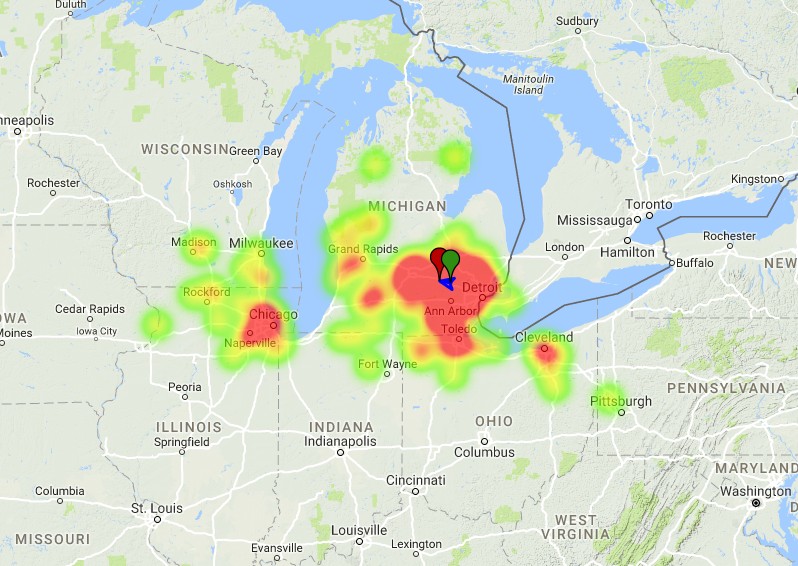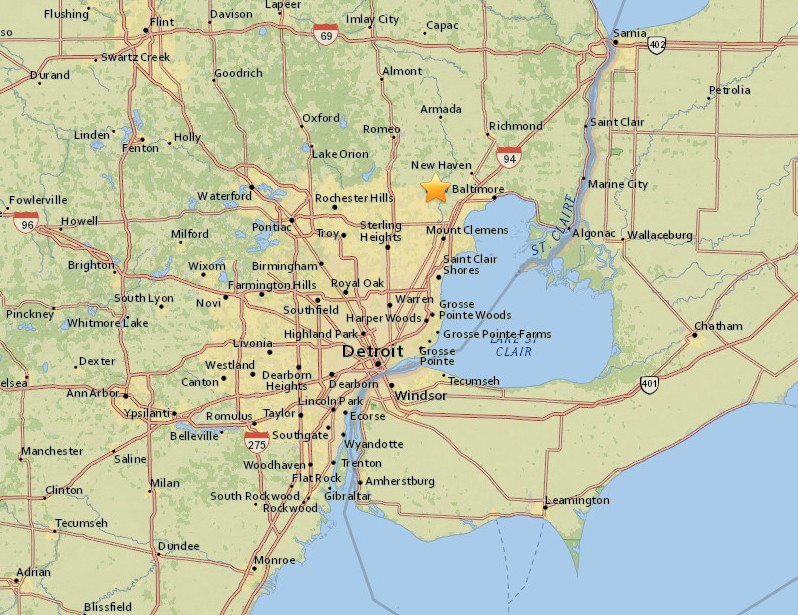Bright fireball explodes over Michigan, USGS registers it as M2.0 earthquake

A very bright fireball illuminated the sky over Michigan, US at 01:11 UTC on January 17, 2018 (20:11 EST, January 16) and was followed by a sonic boom heard over a wide area. The USGS registered it as M2.0 earthquake just north of Detroit, Michigan.
The American Meteor Society (AMS) received 356 witness reports by 08:35 UTC from Michigan, SE Wisconsin, NE Illinois, N Indiana, N Ohio (US) and S Ontario, Canada.
50 people reported concurrent sound associated with the event and 114 delayed. Reports are still coming in.

Michigan fireball January 17, 2018 heatmap. Credit: AMS
This event was registered by the USGS as M2.0 earthquake just north of Detroit and reported as felt by more than 115 people. The image below shows the approximate location of the epicenter.

The epicenter of Michigan fireball registered as M2.0 earthquake north of Detroit – January 17, 2018. Credit: USGS
Local law enforcement agencies asked witnesses to stop calling 911 to report the meteor, saying they were tying up the phone lines.
"There is no need to call 911, it's a natural meteor fireball," the Ingham County's Office of Homeland Security and Emergency Management said in a Facebook post.
This event sparked so much interest that people coming to AMS website managed to crash it.
"Major event in Michigan. Server is getting overloaded. We'll be back ASAP, check back soon," AMS said and directed users to submit their reports to the International Meteor Organization (IMO). Since IMO and AMS share reports received, there was no fear of lost reports.
"We have calculated that this was a very slow moving meteor – speed of about 45 000 km/h (28 000 mph)," NASA's Meteor Environment Office said.
"This fact, combined with the brightness of the meteor (which suggests a fairly big space rock at least a yard across), shows that the object penetrated deep into the atmosphere before it broke apart (which produced the sounds heard by many observers). It is likely that there are meteorites on the ground near this region – one of our colleagues at JSC has found a Doppler weather radar signature characteristic of meteoritic material falling to Earth."
INCREDIBLE – Possible meteor streaks through sky in Sterling Heights https://t.co/Ql1yIa7WeT (VIDEO: Kristen Donahue VanRosenberg) pic.twitter.com/kE7gZ6a0Lp
— Local 4 WDIV Detroit (@Local4News) January 17, 2018
#OjosAlCielo
Brillante #Meteoro hoy sobre los Grandes Lagos en Michigan EEUU. Enero 16/2018
Créditos @z_lawler #fireball pic.twitter.com/m77iuXgnwu— Geól. Sergio Almazán (@chematierra) January 17, 2018
Brillante #Meteorito hoy sobre los Grandes Lagos en Michigan EEUU.#USGS confirma sismo por explosión de M2.0https://t.co/7vXIEJyV21
Créditos video: Mike Austin@YouTube #fireball pic.twitter.com/G8Q6xKdGl7— Geól. Sergio Almazán (@chematierra) January 17, 2018
What my security cam caught during the #meteor in #Michigan pic.twitter.com/8vR2Xc3aoa
— Andrea (@cozy2963) January 17, 2018
So people have told me they saw this thing in Northern Michigan, West Virginia, Ohio, Indiana, Illinois, Kentucky, even Texas! Looks like it was central to metro Detroit. (Video: Kevin McCombs) pic.twitter.com/IDGFNJAQaM
— Jason Colthorp (@JasonColthorp) January 17, 2018
BREAKING VIDEO: More footage captures #meteor falling to Earth at top speed near Southeast Michigan. pic.twitter.com/OP6bJbsroe
— The Anon Journal (@TheAnonJournal) January 17, 2018



Featured image: Bright fireball over Michigan at 01:11 UTC, January 17, 2018. Credit: Mike Austin

three presidents visited this so called fire ball. Sorry but you don’t not have the official Story on what happened in Michigan.
and you didn’t bother sharing…